In the realm of market analysis, mastering the nuances of the Williams %R indicator can be a game-changer for traders seeking to navigate the complexities of buying and selling decisions.
As we delve into the essential tips for utilizing this indicator effectively, we uncover a strategic approach that goes beyond mere numbers—offering a gateway to unlocking hidden patterns and trends within the market.
By exploring the seven key insights outlined, traders can gain a deeper understanding of how to harness the power of the Williams %R indicator for informed decision-making and risk management in today's dynamic trading landscape.
Understanding Williams %R Indicator
The Williams %R indicator, developed by Larry Williams, serves as a crucial momentum oscillator utilized by traders to gauge market conditions through a comparison of the current closing price with the high/low range over a specified period, often 14 days.
This indicator oscillates between 0 and -100, with values above -20 signaling overbought conditions and below -80 indicating oversold conditions. Its primary function is to identify potential market reversals, making it a valuable tool for traders looking to pinpoint entry and exit points in the market.
Setting Up Williams %R Parameters
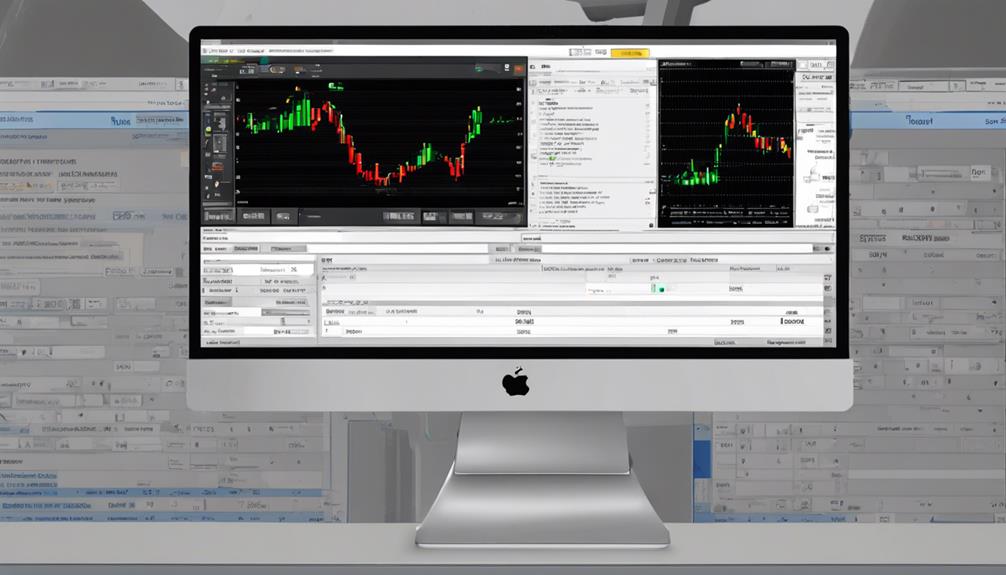
Optimizing Williams %R parameters involves strategic adjustments to enhance its effectiveness in market analysis and align with specific trading strategies. When setting up Williams %R parameters, traders should consider the following:
- Number of Periods: Adjust the number of periods used for calculation, typically set at 14 days, to align with the desired level of sensitivity to price changes.
- Thresholds: Configure overbought and oversold thresholds to match market conditions and trading strategies. Default values are -20 for overbought and -80 for oversold, but these can be adjusted based on the security being analyzed.
- Parameter Settings: Experiment with different parameter settings to understand how they influence the indicator's signals and adapt to varying market dynamics effectively.
- Historical Price Data and Volatility Levels: Incorporate historical price data and volatility levels when setting up Williams %R parameters to ensure they accurately reflect the security's price behavior for more precise security analysis. Regularly reviewing and updating these parameters is crucial to maintaining the indicator's relevance and reliability in trading decisions.
Interpreting Williams %R Readings
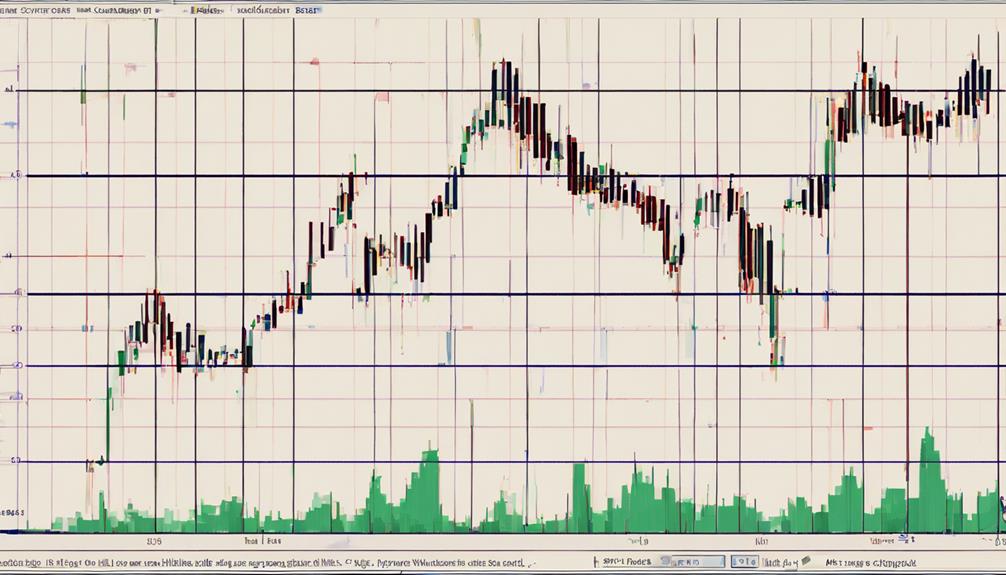
Interpreting Williams %R readings requires a keen understanding of market dynamics and a strategic approach to analyzing potential trends. Williams %R values above -20 typically indicate an overbought market condition, suggesting that prices may be overvalued and a correction could be imminent.
Conversely, readings below -80 signal an oversold market condition, hinting at potential buying opportunities as prices may have dropped excessively. Moreover, crosses above -50 within the Williams %R indicator may signal the beginning of a bullish trend, while crosses below -50 could indicate a bearish trend is emerging.
To enhance the accuracy of Williams %R interpretations, it is advisable to confirm signals with other technical indicators. By combining signals from different indicators, traders can gain a more comprehensive understanding of the market conditions and make more informed trading decisions based on a broader set of data points.
Identifying Overbought and Oversold Levels
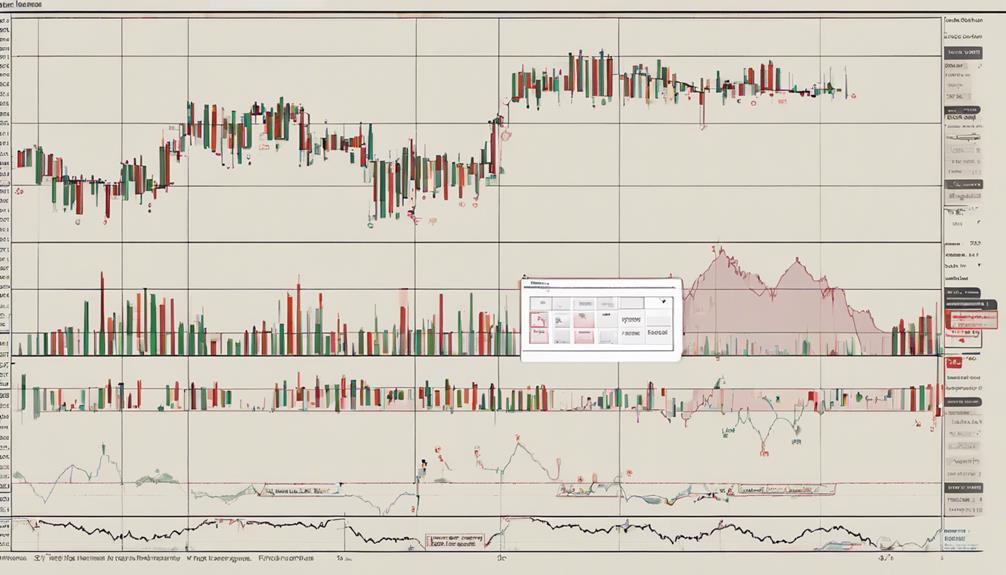
Upon identifying overbought and oversold levels using the Williams %R indicator, traders can strategically anticipate market movements and adjust their trading strategies accordingly. This key analysis helps in understanding potential reversals in price and determining optimal entry and exit points.
Here are some important points to consider:
- Overbought Levels: Typically above -20 in Williams %R, indicating potential selling pressure and a potential reversal in price.
- Oversold Levels: Generally below -80 in Williams %R, suggesting buying pressure and a potential price reversal.
- Entry and Exit Points: Traders often seek extreme readings beyond -80 and above -20 to identify potential entry or exit points in the market.
- Market Conditions and Trading Strategies: Identifying overbought and oversold levels with Williams %R helps traders anticipate price movements and adjust their strategies based on market conditions.
Incorporating Williams %R Into Trading Strategies
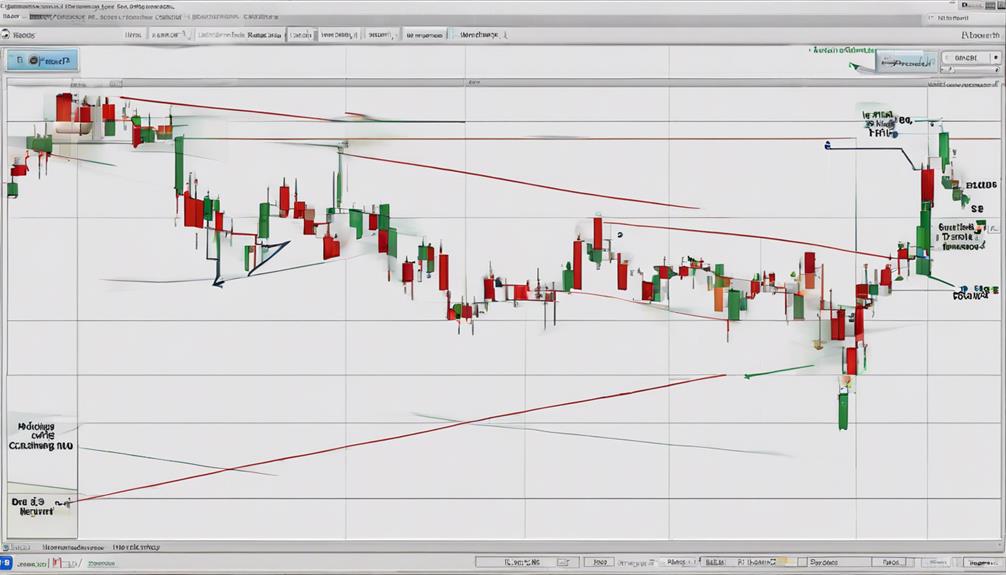
After identifying overbought and oversold levels with the Williams %R indicator, traders can effectively incorporate this technical tool into their trading strategies to make informed decisions in the market. By utilizing Williams %R for entry and exit signals, traders can enhance their trading strategies.
When Williams %R indicates overbought conditions, traders may consider it as a signal to sell or take profits. Conversely, oversold levels could be seen as a potential buying opportunity. Stop-loss orders can be set based on Williams %R signals to manage risk effectively and protect capital.
It is crucial to consider the market context and trends when using Williams %R to avoid false signals, as this indicator may generate signals that are more reliable in certain market conditions. Combining Williams %R with price action analysis can provide a comprehensive view of the market, helping traders make more informed trading decisions.
Using Williams %R for Trend Confirmation
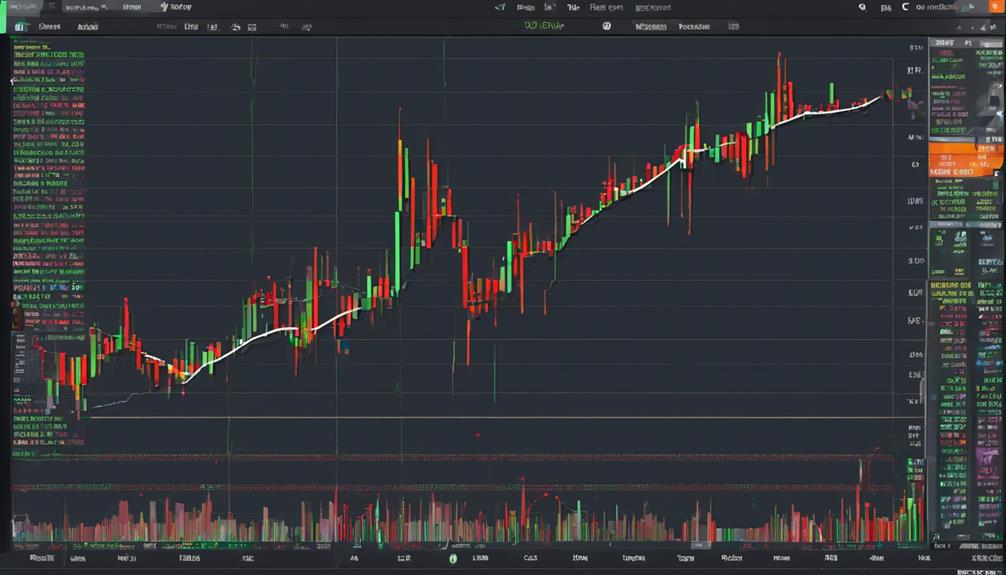
When utilizing the Williams %R indicator for trend confirmation, traders can assess trend strength, pinpoint potential entry points, and establish effective risk management strategies.
By monitoring the indicator's movements in relation to the -50 level, market participants can gain insights into the continuity of bullish or bearish trends.
Combining this information with other technical tools can enhance the accuracy of trend confirmation and optimize trading decisions.
Trend Strength Assessment
Utilizing the Williams %R indicator for trend strength assessment involves scrutinizing its movements in relation to the -50 midpoint to confirm the robustness of the prevailing market trend. When analyzing trend strength using Williams %R:
- A cross above -50 signifies a strengthening bullish trend.
- A cross below -50 indicates a weakening bearish trend.
- Readings above -20 suggest an overbought market, potentially signaling a strong uptrend.
- Readings below -80 imply an oversold market, potentially indicating a robust downtrend.
Entry Point Identification
Entry point identification through the utilization of the Williams %R indicator serves as a critical component in confirming market trends and making strategic trading decisions. By analyzing overbought and oversold signals, traders can pinpoint optimal entry points.
When Williams %R crosses above -50, it suggests a bullish trend, signaling a potential entry point. Conversely, when it drops below -50, it indicates a bearish trend, presenting another entry opportunity. This method helps validate trend direction and assists in decision-making for market entry or exit.
Combining Williams %R signals with other technical indicators enhances trend confirmation, offering a more comprehensive analysis. Through assessing market momentum and potential reversals, Williams %R aids traders in making well-informed decisions regarding entry points.
Risk Management Strategy
Confirming market trends through the strategic use of the Williams %R indicator is a pivotal aspect of implementing a robust risk management strategy in trading. When using Williams %R for trend confirmation, consider the following:
- Utilize Williams %R to validate trend strength.
- Avoid relying solely on Williams %R signals for entry; confirm with other indicators.
- Implement stop-loss orders in conjunction with Williams %R to manage risk.
- By combining Williams %R with other technical analysis tools, reduce the risk of false signals and enhance overall market analysis accuracy.
Integrating Williams %R into risk management strategies not only assists in confirming trends but also enhances decision-making processes, ultimately leading to more informed and strategic trading actions.
Managing Risk With Williams %R
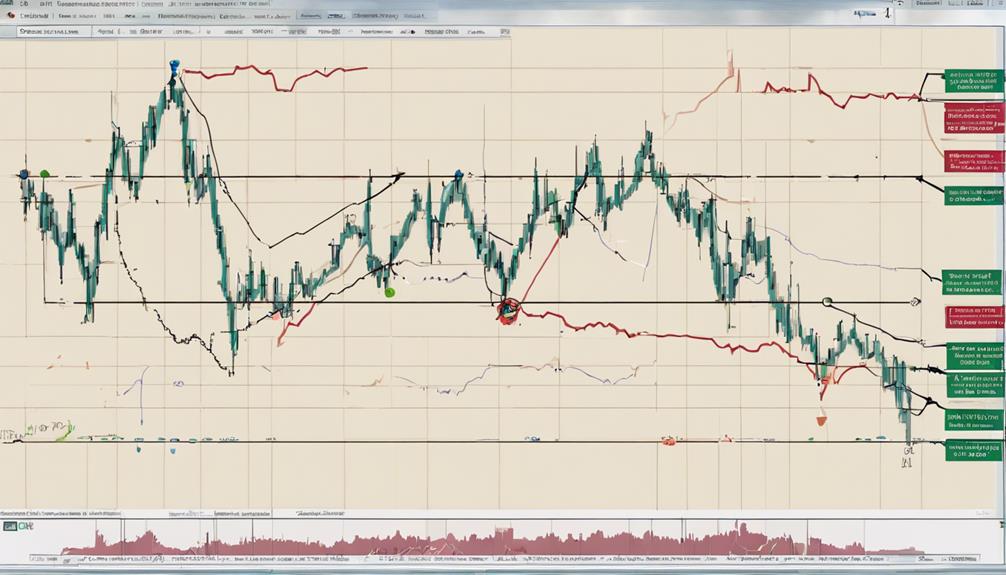
To effectively manage risk with the Williams %R indicator, traders should focus on implementing risk reduction strategies such as setting stop-loss orders based on indicator signals. Proper position sizing should be utilized to mitigate potential losses, and adjustments to risk management strategies should be made in response to prevailing market conditions and trends.
It is crucial to avoid excessive risk exposure by refraining from overleveraging positions solely based on Williams %R signals and instead maintain a disciplined risk management plan to protect capital.
Risk Reduction Strategies
When employing the Williams %R indicator in trading, an essential aspect to focus on is implementing effective risk reduction strategies to safeguard capital and optimize returns. Risk reduction strategies are crucial for successful trading with Williams %R.
Here are some key strategies to consider:
- Utilize stop-loss orders to limit potential losses.
- Determine position sizing based on risk tolerance levels.
- Diversify your trading portfolio to spread risk.
- Implement trailing stop orders to secure profits and guard against reversals.
Setting Stop Loss
Implementing stop loss orders strategically based on Williams %R signals is a critical component of managing risk effectively in trading. Utilizing the overbought and oversold levels indicated by Williams %R as reference points can assist in determining optimal stop loss levels.
It is essential to adjust these stop loss orders according to the specific market volatility and the characteristics of the asset being traded. Traders can enhance risk management by incorporating trailing stop losses alongside Williams %R for a more dynamic approach.
When setting stop losses with Williams %R, considering historical price movements and volatility patterns is crucial for determining the most suitable stop loss levels. This comprehensive approach to stop loss placement with Williams %R can significantly improve risk management strategies in trading.
How Can I Use the Williams %R Indicator for Market Analysis?
The Williams %R indicator for stock trading measures overbought or oversold conditions of an asset. Traders can use it to identify potential trend reversals or entry/exit points. By analyzing the indicator’s value relative to its overbought and oversold levels, traders can make informed decisions based on market analysis.
Frequently Asked Questions
What Is the Best Setting for the Williams %R Indicator?
The optimal setting for the Williams %R indicator depends on trader preferences. A period of 14 is the default but adjusting it to 10 can provide more frequent signals, while 20 may offer smoother signals. Experimentation is key for finding the right balance.
How Do You Read a Williams R Indicator?
Reading a Williams %R indicator involves analyzing price proximity to overbought or oversold levels. Look for crosses of key levels like -50 for momentum shifts. Understand the formula comparing closing price to highs and lows for informed trading decisions.
Is Williams %R Leading or Lagging?
Williams %R is a leading indicator, providing signals ahead of price movements. It anticipates market reversals through overbought/oversold conditions and extreme levels. Traders use it for proactive decision-making due to its responsiveness in forecasting market shifts.
What Is the Difference Between RSI and Williams R Indicator?
The Relative Strength Index (RSI) and Williams %R indicator differ in their measurement ranges and boundaries. RSI ranges from 0 to 100, indicating overbought and oversold conditions, while Williams %R ranges from 0 to -100, emphasizing extreme price levels.
Conclusion
In conclusion, the Williams %R indicator serves as a valuable compass for navigating the treacherous waters of the market, guiding traders towards potential entry and exit points with precision.
By understanding its signals, setting parameters effectively, and incorporating it into trading strategies, investors can make informed decisions and manage risk efficiently.
Like a skilled captain relying on a compass to navigate through stormy seas, traders can use the Williams %R indicator to steer their way towards profitable trading opportunities.
